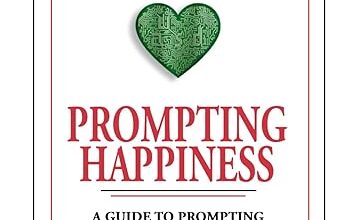Unlocking the Post-COVID Publishing Renaissance: What Challenges Await the World of Publishing?

As the publishing industry is constantly in flux, staying ahead of trends and understanding the challenges authors face is crucial. Author Shawn Inmon shares his knowledge and experiences in the publishing world, especially the post-COVID trends shaping the literary realm.
Growing up in a small town of 400 people, Inmon’s early experiences laid the foundation for his future endeavors. At the age of 15, his teacher recommended him for a writing contest in the state of Washington. The urgency of a deadline propelled Inmon to write a 5,000-word short story overnight, an experience that would mark the beginning of his writing journey.
One of the pivotal chapters in Inmon’s early writing career was his mentorship with Allan Furst, a writer who would later become a New York Times bestseller. The mentorship was filled with valuable lessons, including the blunt truth that being a wealthy writer is a rare feat. This early encounter with the realities of the industry set the tone for Inmon’s approach to storytelling.
Despite his initial warning about the challenges of wealth in writing, Furst’s influence continued to shape Inmon’s philosophy. The advice to “pity the reader” became a guiding principle, echoing the sentiments of one of Inmon’s favorite writers, Kurt Vonnegut.

“With fewer tools at our disposal, authors faced both challenges and opportunities” — Shawn Inmon
Inmon discusses the early days of his writing career in 2012 when promoting a book was a different game altogether. “With fewer tools at our disposal, authors faced both challenges and opportunities,” Inmon says. While getting the word out was daunting, the upside was a less saturated market. Amazon’s algorithms, friendlier in those days, allowed for prolonged success following a well-executed promotion.
“In the current landscape, cost-per-click ads, including those on Facebook, Amazon, and BookBub, have become the cornerstone of book promotion,” Inmon says. This shift, however, presents a new challenge, requiring authors to master the art of advertising—a skill set not all writers are equipped to develop. The volume of books entering the market demands a strategic approach to ensure a book doesn’t merely drop into the vast ocean of titles without a ripple.
Inmon’s analogy of a book as a pebble highlights the reality of the industry. The challenge lies in catching the reader’s attention amid the deluge of new releases. It’s a battle against obscurity that requires creative marketing strategies and an understanding of readers’ preferences.
While his daily routine as a writer remained largely unaffected by the pandemic, the reading habits of the public underwent a significant shift. “The COVID-19 pandemic played a pivotal role in my career trajectory. As people sought new forms of entertainment during lockdowns, ebooks and audiobooks gained traction,” Inmon says.
“In 2020, I experienced a surge in success, crossing significant milestones in income and book sales. The narrative simplicity of a world devoid of technology, coupled with themes of family and belonging, struck a chord with readers,” Inmon says. A series he published that year, starting with “A Door into Time,” unexpectedly resonated with readers. The narrative of a man thrust into a distant future, stripped of technology, and finding solace in a close-knit tribe struck a chord. The escapism offered by this series, coupled with a sense of belonging and familial bonds, appealed to a pandemic audience seeking respite. The genuine connections that readers form with the characters and the longing for a simpler life propel the story.
Inmon’s writing process, described as a laborious journey of crafting one sentence at a time, reflects a deeply personal and organic approach to storytelling. “Maintaining a genuine connection with readers is crucial. I envision a future where AI flooding the market with books could push authors into a realm of complete anonymity,” Inmon says. The advantage, he believes, will lie with those who have built a dedicated readership over the years. “Regardless of an author’s standing, there exists a common battleground: fighting against anonymity,” Inmon says.
Inmon’s belief of the value of connection with readers goes beyond mere marketing. His Facebook page, revealing a thriving community, underscores the significance of building relationships. A robust network of engaged readers, who feel a sense of familiarity with the author, becomes a formidable asset in an industry inundated with content.
As AI continues to make inroads into the publishing world, Inmon acknowledges the inevitability of change. However, with a career spanning multiple decades, he expresses gratitude for having entered the industry before the potential upheaval caused by AI became more pronounced.
Inmon’s journey serves as a microcosm of the broader changes in the publishing industry. From the challenges of book promotion to the unexpected success of narratives resonating with a pandemic audience, Inmon’s insights provide a nuanced understanding of the industry’s dynamic nature. As authors continue to navigate post-COVID trends, the key lies in finding a delicate balance between embracing new technologies, understanding reader preferences, and, most importantly, maintaining a genuine connection with the audience.
Inmon’s journey showcases the importance of resilience, creative evolution, and the enduring power of storytelling in an industry that continues to redefine itself. As authors chart their courses in this evolving terrain, it is crucial to keep in mind the most important facets—forging connections, embracing change, and above all, telling stories that resonate across the shifting sands of literary trends.



